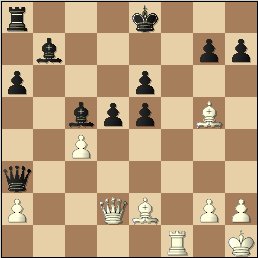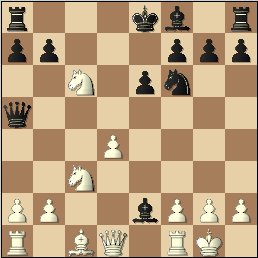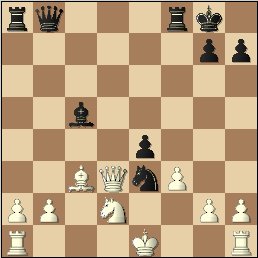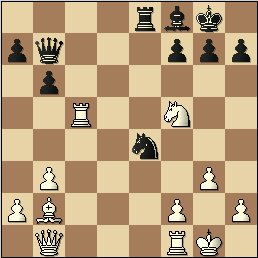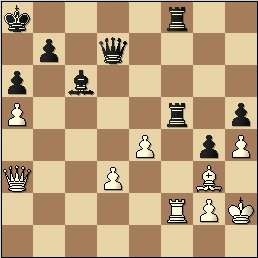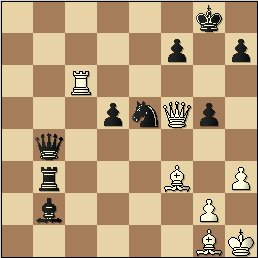Chess BLOG
For past entries, please check out the Chess Blog archive.
December 31, 2003
As 2003 draws to a close, permit me to thank you all for your support
here at Chess is Fun. Many of you have expressed your appreciation in
the guestbook. I am heartened by your thoughts and I thank you for
them.
Our web site statistics show a healthy web site. At the main Chess is
Fun instructional site, more than 2,000 different users are requesting
about 30,000 pages and more than 75,000 "hits" on average every day!
And at our
queensac site (the game archive, chess BLOG, chess stamp exhibit, and
store), more than 1,200
different people are daily examining about 6,000 pages and generating on
average
45,000 hits! It's clear here that chess really is fun ... and alive and
well.
Of course, I also thank you for your purchases here during the year.
Amazon, Chess House, and The Chess Piece are our chess partners. As
many of you have discovered, they offer great prices on chess books,
sets, clocks, and other merchandise (and really good service too). The small commission I
receive helps to pay the bills here. Of course, this web site is still
mostly a labor of love, but my family and I really do appreciate your
support!
A special thank you to a kind gentleman from Sweden who noticed that our
incorrect coding made it impossible for him to make a voluntary
donation! This may explain why I've received no donations all year
(smile). I've fixed the problem so, by all means feel free to
contribute. Of course, there's no obligation,
but every small $3 payment will help to keep the Chess BLOG and the
free chess archive alive and kicking.
Finally, with the new year upon us, it's time for resolutions. Here,
more of a hope to finally get a Chess is Fun message board up and
running. It would be great to promote discussions on strategy,
instruction, opening play, and so on and so forth. Anyone out there
willing to volunteer some expertise to help
make it go?
Happy New Year!
Jon Edwards (Chess is Fun)
December 30, 2003
In this age of computers, we chess players have come to expect that all new books are checked by a chess engine or two. Of course, such was not always the case. The classics of chess literature were analyzed by hand, and, while many contain errors of various sorts, I think of those errors as part of the charm.
 One of the great classics of human analysis is Jan Timman's The Art of Chess Analysis. The Dutch GM was one of the world's strongest players during the 1970s and this collection of 24 games dates from that period. There are three games from the 1972 Fischer-Spassky match, four Timman games, and a slew from players such as Karpov, Spassky, Hort, Kortchnoi, and Portisch. More important than the great players and great games is Timman's readable analysis.
One of the great classics of human analysis is Jan Timman's The Art of Chess Analysis. The Dutch GM was one of the world's strongest players during the 1970s and this collection of 24 games dates from that period. There are three games from the 1972 Fischer-Spassky match, four Timman games, and a slew from players such as Karpov, Spassky, Hort, Kortchnoi, and Portisch. More important than the great players and great games is Timman's readable analysis.
Here are all 24 of the games in the book and here are some quick notes on one of my favorites. In this game, a young Gary Kasparov essays a speculative attack. Is it sound? Even Kasparov didn't think so after the game, but his effort leaves us with a wonderful struggle and some great notes from Timman. As a small bonus, here are the games that were played in the same line after Kasparov introduced the new move. As you will see, the results are mixed.
1.e4 c5 2.Nf3 e6 3.d4 cxd4 4.Nxd4 a6 5.Nc3 Qc7 6.Be2 b5 7.Bf3 Bb7 8.0-0 Nc6 9.Nxc6 dxc6 Diagram
10.e5 A new move. Kasparov offers a pawn for open lines in the center. 10...Qxe5 11.Re1 Qc7 12.Bh5 With the threat of Rxe6+ 12...Be7 [12...g6!? 13.Qd4 f6 14.Rxe6+ Kf7 15.Bg4 Rd8 16.Qe4~~] 13.Rxe6 g6 14.Re1 Rd8 [14...gxh5 Best probably to take immediately 15.Qd4 f6 16.Bf4 c5 17.Qe3 Qc6 18.Qh3 witrh much pressure upon black's position] 15.Qf3 c5 16.Bf4 Qb6 [16...Bxf3 17.Bxc7 Bxh5 18.Bxd8 Kxd8 19.f3 with compensation owing to the awkwardness of the Bh5] 17.Qg3 gxh5 18.Bc7 Qg6 19.Bxd8 Qxg3 20.hxg3 Kxd8 21.Rad1+ Kc7 22.Nd5+ Bxd5 23.Rxd5 h6 24.Rxh5 Rh7 25.Rhe5 Kd7 26.R5e3 Rg7 27.Rd3+ Kc7 28.Ra3 Rg6 29.Rf3 Bf6 30.c3 Kd7 31.Rd3+ Kc7 32.Re8 Ne7 33.Red8 Nc6 34.R8d7+ Kb6 35.Rxf7 Be7 36.Re3 Bd6 37.f4 c4 38.Kh2 Bc5 39.Re2 b4 40.Re4 bxc3 41.bxc3 Bf2 42.Rxc4 [42.f5!?] 42...Bxg3+ 43.Kh3 Be1 44.a4 Na5?! [44...Rg3+ 45.Kh2 Rxc3 46.Rxc3 Bxc3 47.Rh7 Ka5 48.Rxh6 Nb4 49.g4 Kxa4 50.f5 a5 51.f6+-] 45.Rb4+ Kc5 [45...Kc6 better, but still losing 46.Rf5 Bxc3 47.Rxa5 Bxb4 48.Rxa6+] 46.Rf5+ 1-0
December 29, 2003
Mikhail Gurevich won the 1985 Soviet Championship on an interesting technicality. He tied for first place with Gavrikov and Chernin, and the organizers held a playoff. But all of the playoff games ended in a draw, and so Gurevich obtained first on tiebreak points. There were so many drawn games in the event that Gurevich won with only a +3 score (11-8). One competitor, Razuvayev, finished with 18 draws in 19 games!
Despite the plethora of draws, the chess was hard fought as the next game illustrates. Gurevich wins using a wonderful knight sacrifice that has few precedents. Here's the game and and are some similar games.
1.d4 Nf6 2.c4 e6 3.Nc3 Bb4 4.e3 0-0 5.Bd3 c5 6.a3 Bxc3+ 7.bxc3 Nc6 8.Ne2 d5 9.cxd5 exd5 10.0-0 b6 11.f3 Re8 12.Ra2 Na5 13.Ng3 Bb7 14.Re2 Rc8 15.Kh1 cxd4 16.cxd4 Nc4 17.e4 Nd7 18.e5 g6 19.f4 Qh4 20.Ref2 Rf8 Diagram
21.Nf5 gxf5 22.Bxf5 Rfd8 [22...Rc7 23.Rf3+-] 23.Rf3 Nf8 24.Bxc8 Bxc8 25.f5 Ng6 [25...Kh8 26.Rg3+-] 26.fxg6 fxg6 27.Rf4 Qe7 28.Rf6 Qg7 29.Qe1 Bf5 30.Qh4 Rc8 31.Bh6 Qd7 32.e6 Qe8 33.R1xf5 1-0
December 28, 2003
Born in 1911 in a small Polish village, Sammy Reshevsky played well enough to give simultaneous exhibitions throughout Europe (Berlin, Vienna, Paris, and London) at just 8 years of age. His chess was fantastic as the following game, played during that early tour, well demonstrates.
1.e4 e5 2.f4 exf4 3.Bc4 Be7 4.Nf3 Bh4+ 5.g3 fxg3 6.0-0 gxh2+ 7.Kh1 Nh6 8.d4 Qe7 9.Bxh6 gxh6 10.Ne5 Bf6 11.Qh5 Rf8 Diagram
12.Nxf7 Qxe4+ 13.Kxh2 Qxc2+ 14.Kg3 [14.Nd2 Qxd2+ 15.Kh1 Rg8 16.Ne5++-] 14...Bh4+ [14...Rg8+ 15.Ng5+ Rg6 16.Bf7+; 14...d5 15.Rxf6 Rg8+ 16.Ng5+ Kd8 17.Qxh6 dxc4 18.Rf8++-] 15.Qxh4 Qxc4 [15...Rg8+ 16.Kf4+- Qxc4 17.Re1++-] 16.Qd8# 1-0
Reshevsky went on to tour the United States for a year at the age of just 9. He drew huge crowds and and substantial interest to chess in America. He is also well known, of course, for winning the US Championship five times and holds what must be an unbeatable record: 76 consecutive tournament games without a loss!
I am pleased to have on my shelf Reshevsky's Best Games of Chess. The book is well out of print, but the games are timeless. Here they are.
December 27, 2003
 On December 16, I mentioned two of Graham Burgess's books. His 1998 The Mammoth Book of THE WORLD's GREATEST CHESS GAMES may be the best of the three. I'm sorry to see that it is currently out of stock at Amazon, but check back later if you are interested.
On December 16, I mentioned two of Graham Burgess's books. His 1998 The Mammoth Book of THE WORLD's GREATEST CHESS GAMES may be the best of the three. I'm sorry to see that it is currently out of stock at Amazon, but check back later if you are interested.
How to select the 100 greatest games ever? Burgess, John Nunn, and John Emms selected 180 of the best games ever played... and then voted themselves on the best. Given the quality of the games and their annotations, I would love to see a book with the 80 games they decided not to include! The annotations are of high quality and, perhaps most important, like Burgess's other books, these are great values. This collection is available for under $12, a pretty good price for a 550+ page book!
Here are the 100 games they picked. I was pleased to see that the selection included THREE correspondence games including my favorite, the 5th World Championship game between Berliner and Estrin.
And here's one fun game from the volume with my quick annotations. It is interesting to see how Spassky energetically pressed the opening, but Petrosian, the great defender, held on and then pressed the counter-attack through Spassky's exposed kingside.
1.Nf3 Nf6 2.g3 g6 3.c4 Bg7 4.Bg2 0-0 5.0-0 Nc6 6.Nc3 d6 7.d4 a6 8.d5 Na5 9.Nd2 c5 10.Qc2 e5 11.b3 Ng4 12.e4 f5 13.exf5 gxf5 14.Nd1 b5 15.f3 e4 16.Bb2 exf3 17.Bxf3 Bxb2 18.Qxb2 Ne5 19.Be2 f4 20.gxf4 Bh3 21.Ne3 A strong exchange sacrifice [21.Rf2 Rxf4 22.Rxf4 Qg5+] 21...Bxf1 22.Rxf1 Ng6 23.Bg4 Nxf4 Diagram
24.Rxf4! The second exchange sac 24...Rxf4 25.Be6+ Rf7 [25...Kf8 26.Qh8+ Ke7 27.Qxh7+ Kf6 28.Qh6+ Ke5 (28...Ke7 29.Qxf4) 29.Qg7+ Qf6 30.Qg3 Ng4+ will win the house] 26.Ne4 Qh4 27.Nxd6 Qg5+ [27...Raa7 28.Nef5; 27...Qe1+ 28.Kg2 Qxe3 29.Bxf7+ Kf8 30.Qh8+ Ke7 31.Nf5++-] 28.Kh1 Raa7 [28...Qxe3 29.Bxf7+ Kf8 30.Qh8+ Ke7 31.Nf5++-] 29.Bxf7+ Rxf7 30.Qh8+! [30.Qh8+ Kxh8 31.Nxf7++-] 1-0
December 26, 2003
 The 1999 World Chess Championship in Las Vegas had a new knock-out format and a surprise winner, Russian Grandmaster Alexander Khalifman. Khlaifman had been competing successfully in the highest levels of chess for years so his win should not have come as a complete shock. He has a broad opening repertoire and a distinctive style, a willingness to sacrifice a pawn or more for long term positional compensation.
The 1999 World Chess Championship in Las Vegas had a new knock-out format and a surprise winner, Russian Grandmaster Alexander Khalifman. Khlaifman had been competing successfully in the highest levels of chess for years so his win should not have come as a complete shock. He has a broad opening repertoire and a distinctive style, a willingness to sacrifice a pawn or more for long term positional compensation.
In 2000, Gennady Nesis wrote Khalifman: Life and Games, a book that includes 100 well annotated games. Here are most of the games in the book, and here is one of Khalifman's early efforts.
1.e4 c5 2.c3 d5 3.exd5 Qxd5 4.d4 e6 5.Nf3 Nf6 6.Bd3 Be7 7.0-0 0-0 8.c4 Qd7 9.dxc5 Rd8 10.Ne5 Qd4 11.Qe2 Nbd7 12.Nf3 Qg4 13.h3 Qh5 14.c6 bxc6 15.Nc3 Bb7 16.Qc2 [16.Ne4 c5 17.Bf4=] 16...c5 17.Be2 Ne5 18.Ng5 Qh4 19.Be3 [19.g3 Qh6 The weaknesses on the white kingside are more significant than the cramping of the Black queen.] 19...Nxc4 20.Qa4 Rd4! 21.Qb5 Diagram
[21.Bxd4 Qxg5-+; 21.Nf3 Nxe3 22.Nxh4 Rxa4-+] 21...Bxg2! 22.Bxc4 [22.Bxd4 Qxg5-+; 22.Kxg2 Nxe3+ 23.fxe3 Qxg5+ 24.Kh1 Rh4-+] 22...Bxh3 [22...Rg4!-+ 23.Kh2 (23.hxg4 Qh1#) 23...Bd6+ 24.f4 Qg3+ 25.Kg1 Bb7#] 23.Nce4 [23.Nxh3 Rg4+ 24.Kh2 Bd6+ 25.f4 Qg3+ 26.Kh1 Qg2#] 23...Nxe4 24.Nxh3 Qg4+ 25.Kh2 Bd6+ 26.Bf4 Bxf4+ 27.Nxf4 Qxf4+ *
December 25, 2003

 May this holiday
May this holiday
Bring world peace
and to every home
The harmony of chess pieces!
Good chess everyone!
Jon Edwards at Chess is Fun
December 24, 2003
Something special today in honor of the holiday season.
In 1914, Thomas Dawson produced an amazing chess composition. To me, it looks a bit like a Christmas tree and so the theme for the day. Of course, Dawson, the author, thought that it looks like a chandelier, but that won't lessen my enthusiasm for his effort.
It's white to move and mate in two. If you have not seen it before, you will quickly realize that there's no conventional mate in two. The knights surely cannot do the job, and what else could. If you want to try to solve it, here's one key hint: What was black's last move!
Solution...f7-f5 must have been the last move! The white pawns have made ten captures, and ten Black pieces (and pawns) are off the board. Hence, all of Black's pieces were captured by the white pawns... So we know that the Black Bc8 moved out earlier to be captured by a white pawn (The Black Bc8 was NOT captured on c8). Because we know that Black moved the d-pawn at an earlier time (to let the Bc8 out to be captured by a white pawn), Black's last move must have been f7-f5.2.gxf6 And mates with f6-f7 on the next move *
December 23, 2003
A tall, handsome American from Somerville, Massachusetts, Harry Nelson Pillsbury was an instant chess legend. He learned the moves late at age sixteen, but mastered the game quickly. Although he had no international experience, he gained an invitation to the Hastings Tournament of 1895.
The lineup included the greatest players of the day, including the new World Champion, Emanuel Lasker, the former champion Steinitz, Tarrasch, Burn, Mieses, and many others.
Here is Pillsbury's game against Amos Burn, a memorable attack. Pillsbury won the event, 1/2 point ahead of Tarrasch and a full point ahead of Lasker!
1.d4 d5 2.c4 e6 3.Nc3 Nf6 4.Bg5 Be7 5.e3 0-0 6.Nf3 b6 7.Rc1 Bb7 8.cxd5 Nxd5 9.Bxe7 Qxe7 10.Nxd5 Bxd5 11.Bd3 Rc8 12.e4 Bb7 13.0-0 Nd7 14.Qe2 a6 15.Rc3 c6 16.Rfc1 b5 17.Qe3 Rc7 18.Qf4 Rac8 19.e5 c5 Diagram
20.Bxh7+ Kxh7 21.Ng5+ Kg8 [21...Kg6 22.Rg3 f6 23.Nxe6+ Kh7 24.Qh4+ Kg8 25.Nxg7 Qxg7 26.exf6+-] 22.Rh3 Qe8 [22...Nf6 23.Qh4+-] 23.Qh4 Kf8 24.Nh7+ Kg8 25.Nf6+ Kf8 [25...gxf6 26.Qh8#; 25...Nxf6 26.Qh8#] 26.Nxe8 [26.Qg5! gxf6 27.exf6 Nxf6 28.Qxf6 e5 29.Rh8#] 26...Kxe8 27.Qg5 cxd4 28.Rh8+ [28.Rxc7 Rxc7 29.Rh8+ Nf8 30.Rxf8+ Kxf8 31.Qd8#] 1-0
Here are all of Pillsbury's games at Hastings.
December 22, 2003
One of my young students, Rahul Swaminathan, had a good run at the US Nationals, finishing 12th but having a great shot at more. He had many memorable games, including one that looked quite a bit like the following. It wasn't quite the same, actually. Rahul was well acquainted with this "English Attack." I showed it to him as a nice, easy-to-understand weapon against the Najdorf Sicilian.
But here, Rahul faced the Sozin Sicilian and, rather than play the active lines I had shown him, he fell back upon the English attack. Not a bad reaction from a youngster. His opponent permitted white to pursue his set-up and, as is clear, it can be quite a formidable weapon indeed.
1.e4 c5 2.Nf3 d6 3.d4 cxd4 4.Nxd4 Nf6 5.Nc3 a6 6.f3 e6 7.Be3 Be7 8.Qd2 Nc6 9.0-0-0 0-0 10.g4 b5 11.h4 Bb7 12.h5 Qc7 13.g5 Nd7 Diagram
14.g6 fxg6 15.hxg6 h6 16.Nxe6 Qa5 17.Bxh6 gxh6 18.Qxh6 *
In honor of his fine win in the game and his wonderful showing at the tournament (with a trophy bigger than my US Championship win!), I offer a collection of English Attacks, all wins for white. What's really neat about this collection is that these games from a whole range of different move orders. So you can see how to get these great positions, and then see how to convert the point!
December 20, 2003
There's an African saying: "When two elephants fight, it's the grass that suffers." Bobby Fischer and Mikhail Botvinnik played only once, in Varna, 1962. The Game appears in several publications, notably as game 39 in Fischers' My 60 Memorable Games and as game 82 in Botvinnik's Half a Century of Chess.
Botvinnik follows analysis prepared for his match against Smyslov but soon runs into an extraordinary improvement. As it turns out, Black's 17th move is not a winning shot, but white's subsequent play permits Fischer to win a clear pawn. That ought to have been enough, but this battle of titans should serve as an inspiration to all who may find themselves a pawn down. Rather than give up, Botvinnik defended as precisely and vigorously as possible.
The game is worth your study. Perhaps you can find where Fischer went wrong.
1.c4 g6 2.d4 Nf6 3.Nc3 d5 4.Nf3 Bg7 5.Qb3 dxc4 6.Qxc4 0-0 7.e4 Bg4 8.Be3 Nfd7 9.Be2 Nc6 10.Rd1 Nb6 11.Qc5 Qd6 12.h3 Bxf3 13.gxf3 Rfd8 14.d5 Ne5 15.Nb5 Qf6 16.f4 Ned7 17.e5 Diagram
Fischer demolishes Botvinnik's prepared variation. "One can guess that my equanimity was wrecked," admitted the World Champion. [17.Qxc7 Qxb2] 17...Qxf4! "Even here, White retains good play, but the unexpected move shook me." wrote Botvinnik. 18.Bxf4 Nxc5 19.Nxc7 Rac8 20.d6 exd6 21.exd6 Bxb2 22.0-0 B: "Black has an extra pawn, but the white pieces are very actively placed. Correct is 22...Ncd7 23.Bf3 Be5 24.Bxe5 Nxe5 25.Bxb7 Rb8 when white has only a minimal advantage"
F: "Needless to say, I could disagree more. Why should Black return the pawn?" 22...Nbd7 23.Rd5 b6 24.Bf3? [24.Bc4] 24...Ne6 25.Nxe6 fxe6 26.Rd3 Nc5 27.Re3 e5 28.Bxe5 Bxe5 29.Rxe5 Rxd6 30.Re7 Rd7 31.Rxd7 Nxd7 32.Bg4 Rc7 33.Re1 Kf7 34.Kg2 Nc5 35.Re3 Re7 36.Rf3+ Kg7 37.Rc3 Re4 38.Bd1 Rd4 39.Bc2 Kf6 40.Kf3 Kg5 41.Kg3 Ne4+ 42.Bxe4 Rxe4 43.Ra3 Re7 44.Rf3 Rc7 45.a4 the sealed move. At breakfast the next morning, Botvinnik noted that he felt the position was a draw. Word spread that the Russians said that Fischer had missed a win. 45...Rc5 46.Rf7 Ra5 47.Rxh7 Rxa4 48.h4+ Kf5 49.Rf7+ Ke5 50.Rg7 Ra1 51.Kf3 b5? Fischer claimed a win after 51...Kd5 52.h5 Ra3+ 53.Kg2 gxh5 54.Rg5+ Kd6 55.Rxb5 h4 56.f4 Kc6 57.Rb8 h3+ 58.Kh2 a5 59.f5 Kc7 60.Rb5 Kd6 61.f6 Ke6 62.Rb6+ Kf7 63.Ra6 Kg6 64.Rc6 a4 65.Ra6 Kf7 66.Rc6 Rd3 67.Ra6 a3 68.Kg1 1/2-1/2
December 19, 2003
Try to imagine confronting a theoretical novelty on move 5 against one of the strongest players in the world. Hard to believe? Soviet expansion into the Baltic states in 1939-40 meant that Paul Keres from Estonia and Vladimir Petrov from Latvia were now playing in the Soviet Championship. It is interesting to note that Petrov was denounced during the war for derogatory comments against the Soviet Union and and died in a a Gulag. Life was such that Petrov became a non-person and this game, a real beauty, was never mentioned in Keres's Russian language autobiography.
1.e4 e5 2.f4 d5 The Falkbeer Countergambit 3.exd5 e4 4.d3 Nf6 5.Nd2 At the time, this was the novelty 5...exd3 Imagine having to face a novelty on move five against Paul Keres! [5...e3!? 6.Nc4 Nxd5 7.Qf3! Bb4+ 8.Kd1 0-0 9.c3 Bc5 10.d4 Re8 11.Bd3=] 6.Bxd3 Qxd5 [6...Nxd5 7.Qf3 Nc6 8.a3 Bc5 9.Ne2 0-0 10.Nb3 Bb6 with roughly equal chances] 7.Ngf3 Bc5 8.Qe2+ Qe6 9.Ne5 0-0 10.Ne4 Nxe4 [10...Nbd7 11.Bc4 Qe7 12.Nxf7+/-] 11.Qxe4 g6 12.b4 Be7 [12...Bxb4+ 13.Qxb4] 13.Bb2 Bf6 [13...Qb6!; 13...Nc6? 14.0-0-0 Nxb4 15.Bc4 Qf5 (15...Qb6 16.Nxf7 Bf6 (16...Rxf7 17.Rd8+ Bxd8 18.Qe8#) 17.Nd6++-) ] 14.0-0-0 Nc6 [14...Qxa2 15.Bc4 Qa4 16.Bb3 Qe8 17.h4] 15.h4 h5 16.g4 [16.Bc4 Qf5 17.Qxf5 Bxf5 18.Nxc6 Bxb2+ 19.Kxb2 bxc6 20.Rhe1+/-] 16...Bxe5 17.fxe5 Qxg4 18.Qe3 Nxb4 19.e6 Nd5 [19...Nxd3+ 20.cxd3 fxe6 21.Rdf1 Rf5 22.Rhg1 Kf7 23.Qh6 Ke7 24.Rxg4 Rxf1+ 25.Kd2 hxg4 26.Qg7+ Kd8 27.Bf6++-] 20.exf7+ Rxf7 Diagram
21.Bc4! c6 [21...Nxe3 22.Rd8+ Kh7 23.Rh8#; 21...Qxc4 22.Qe8+ Kh7 (22...Rf8 23.Qxg6#) 23.Qh8#] 22.Rxd5! Qxc4 [22...cxd5 23.Qe8+ Rf8 24.Bxd5+ Be6 25.Bxe6+ Qxe6 26.Qxe6+ Rf7 27.Rf1 Raf8 28.Qxg6+ Rg7 29.Qxg7#] 23.Qe8+ it's mate next move 1-0
Curious about what happened in this line after the game? Here are the games.
December 18, 2003
Many of you are familiar with the following endgame composition by Richard Reti, but you may not have been aware of the three other compositions that follow it. All are White to move and draw and, if you have not seen them before, you are in for a treat. How is it possible that White can save any of these positions?
1.Kg7! h4 [1...Kb6 2.Kf6 h4 3.Ke5 h3 4.Kd6 h2 5.c7 Kb7 6.Kd7=] 2.Kf6! Kb6 [2...h3 3.Ke7 h2 4.c7 Kb7 5.Kd7=] 3.Ke5! Kxc6 [3...h3 4.Kd6 h2 5.c7 Kb7 6.Kd7=] 4.Kf4 h3 5.Kg3 h2 6.Kxh2= *
Kb4 first also works1.c6 h5 [1...Kb6 2.Kb4 h5 3.Kc4 Kxc6 4.Kd4 h4 5.Ke4 h3 6.Kf3 h2 7.Kg2 h1Q+ 8.Kxh1=] 2.Kb4 Kb6 [2...h4 3.Kc5 h3 4.Kd6 h2 5.c7 Kb7 6.Kd7=] 3.Kc4 h4 4.Kd5 Kc7 5.Ke4 Kxc6 [5...h3 6.Kf3 h2 7.Kg2 h1Q+ 8.Kxh1 Kxc6=] *
1.Kb7 a5 2.Kc7 Kc5 [2...a4 3.f5 a3 4.f6 a2 5.f7 a1Q 6.f8Q=] 3.Kd7 Kd5 4.Ke7 Ke4 [4...a4 5.f5 a3 6.f6 a2 7.f7 a1Q 8.f8Q=] 5.Ke6! a4 [5...Kxf4 6.Kd5 a4 7.Kc4 a3 8.Kb3 a2 9.Kxa2] 6.f5 a3 7.f6 a2 8.f7 a1Q 9.f8Q= *
The final problem may have the most surprising solution of all. To capture the black pawn, the white king must begin its journey in the wrong direction!
1.Kc8! Kc6 2.Kb8! Kb5 [2...h5 3.a6+-] 3.Kb7 Kxa5 [3...h5 4.a6+- h4 5.a7 h3 6.a8Q h2 7.Qh8] 4.Kc6 h5 5.Kd5 h4 6.Ke4 h3 7.Kf3 h2 8.Kg2 h1Q+ 9.Kxh1= *
December 17, 2003
In 1957, Tal won the 24th USSR Championship in only his second appearance in the event. Botvinnik and Smyslov were absent, getting ready for the world championship match. But here were Bronstein, Keres, Spassky, Kortchnoi, Petrosian, Taimanov, and many others. One look at the crosstable reminds us of what a great event this was. The games were of such high quality that the British Chess Magazine brought out a special tournament book, the first of its well known BCM Quarterlies. Peter Clarke was the author and the book is now long out-of-print, but I wanted to show off two of Tal's wins from that event.
In the 7th round, Tal missed a win against Aronsin. Study the diagram and see if you can find the correct continuation.
1.e4 e5 2.Nf3 Nc6 3.Bb5 a6 4.Ba4 Nf6 5.0-0 Be7 6.Re1 b5 7.Bb3 d6 8.c3 0-0 9.h3 Nd7 10.d4 Nb6 11.Be3 exd4 12.cxd4 d5 13.Nc3 dxe4 14.Nxe4 Bf5 15.d5 Na5 16.d6 cxd6 17.Bxb6 Qxb6 18.Ng3 Be6 19.Bxe6 fxe6 20.Rxe6 Bf6 21.Rxd6 Qb8 22.Nh5 Bxb2 23.Rb1 Nc4 24.Rd7 Ra7 25.Rxb2 Nxb2 26.Qd5+ Kh8 27.Qd4 Rxd7 28.Qxd7 Rg8 29.Ng5 h6 30.Nf7+ Kh7 Diagram
31.h4 [31.Qf5+! g6 32.Qd7 gxh5 (32...Qb6 33.Ng5+ Kh8 34.Qh7#; 32...Rg7 33.Nf6#) 33.Ng5+ Kg6 (33...Kh8 34.Qh7#) 34.Qe6+ Kxg5 (34...Kg7 35.Qf7+ Kh8 36.Qh7#) 35.g3! h4 36.f4+ Kh5 37.Qf5+ Rg5 38.g4#] 31...Qc8 32.Nf6+ Kg6 33.Nxg8 Qxd7 34.Ne5+ Kh7 35.Nxd7 Kxg8 36.Nc5 a5 37.Kf1 Nd1 38.Ne4 b4 39.Ke2 Nb2 40.Kd2 a4 1/2-1/2
Going into the final round, Tal and David Bronstein were tied at 10 1/2 points. Bronstein tried hard to win, but was held to a draw by Kholmov. That meant that Tal would win the 24th USSR CH with victory in this game:
1.c4 Nf6 2.Nc3 g6 3.e4 d6 4.d4 Bg7 5.f3 e5 6.Nge2 Nbd7 7.Bg5 c6 8.Qd2 0-0 9.d5 c5 10.g4 a6 11.Ng3 Re8 12.h4 Qa5 13.Bh6 Nf8 14.h5 Qc7 15.Bd3 b5 16.0-0-0 bxc4 17.Bb1 Bh8 18.Rdg1 Rb8 19.Nf5 N6d7 20.Bg5 Bg7 21.Nxg7 Kxg7 22.Bh6+ Kg8 23.f4 exf4 24.Qxf4 Qd8 25.hxg6 Nxg6 26.Qh2 Nde5 27.Bf4 Nf8 28.Qh6 Neg6 29.Bg5 f6 Diagram
30.e5!! Rxe5 [30...fxg5 31.Bxg6 hxg6 32.Qh8+ Kf7 33.Rh7+ Nxh7 34.Qxh7+ Kf8 35.Rf1+ Bf5 36.gxf5+-] 31.Bxg6 Rb7 [31...hxg6 32.Qh8+ Kf7 33.Rh7+ Ke8 34.Bh6+-] 32.Ne4 fxg5 33.Rf1 The threat is Nf6+ 33...Rxe4 34.Bxe4 Rg7 35.Rf6 Bxg4 36.Rhf1 [36.Bxh7+! Nxh7 37.Rg6! Qf8 38.Qxh7+ Kf7 39.Rf1++-] 36...Nd7 37.Rxd6 Qe7 38.Rxa6+- Kh8 39.Bxh7 Nb8 40.Bf5+ Kg8 41.Be6+ Bxe6 42.Rxe6 1-0
For those who pine for more, Bernard Cafeerty and Mark Taimanov combined to produce a wonderful history of The Soviet Championships [Cardogan, 1998], with annotations of many of the greatest games from 1920 through 1991.
December 16, 2003
In 1997, Graham Burgess wrote The Mammouth Book of Chess, a substantial value for the beginner through intermediate player. Just last year, he added another volume, Chess, Tactics and Strategy, an under $10 520 pp hardcover chock full of interesting material. Starting with an introduction to the simple mates and tactics, some simple endgames, and a summary of chess openings, there's a useful section on strategy.
Here are two games from that section to give you a flavor of what the book offers:
1.e4 c5 2.Nf3 Nc6 3.d4 cxd4 4.Nxd4 g6 5.Be3 Bg7 6.Nc3 Nf6 7.Bc4 0-0 8.Bb3 Qc7 9.f3 a6 10.Qd2 b5 11.0-0-0 Bb7 12.h4 Rad8 13.h5 e5 14.Nde2 Na5 15.Bh6 Nxb3+ 16.axb3 Bxh6 17.Qxh6 d6 18.Ng3 Qe7 19.Rh3 Ne8 20.Rdh1 Rd7 Diagram
21.Qxh7+ Kxh7 22.hxg6+ Kg7 [22...Kxg6 23.Rh6+ Kg5 (23...Kg7 24.Nf5+ Kg8 25.Rh8#) 24.R1h5+ Kf4 25.Nf5 and Ne2#; 22...Kg8 23.Rh8+ Kg7 24.Nf5+ Kf6 25.g7 Nxg7 26.R8h6+ Kg5 27.Nxg7 with Ne2 and R1h5#] 23.Nf5+ Kf6 [23...Kxg6 24.Rh6+ Kg5 25.R1h5+ Kf4 26.Ne2#] 24.g7 Nxg7 25.Rh6+ Kg5 26.Nxg7 Bxe4 27.Nxe4+ Kf4 28.Kd2! it's mate in two! [28.Nh5+ Ke3 29.Re1+ Kd4 30.Rd1+ Ke3 31.Rd3+ Ke2 32.Nhg3+ Ke1 33.Rd1#] 1-0
1.e4 c5 2.Nf3 d6 3.d4 cxd4 4.Nxd4 Nf6 5.Nc3 g6 6.Be3 Bg7 7.f3 0-0 8.Qd2 Nc6 9.Bc4 Bd7 10.0-0-0 Ne5 11.Bb3 Rc8 12.h4 Nc4 13.Bxc4 Rxc4 14.g4 Qa5 15.Kb1 Rfc8 16.h5 Diagram
16...Rxc3 Black's standard counter-play in the Sicilian Dragon 17.bxc3 Bxg4 18.hxg6 [18.fxg4 Nxe4-/+] 18...Bxf3 19.gxh7+ Kh8 [19...Nxh7 20.Nxf3] 20.Bh6 [20.Nxf3 Nxe4-+] 20...Bxh6 21.Qxh6 Nxe4 22.Rdg1 [22.Rhg1! Nxc3+ 23.Kc1 Nxa2+ (23...Ne2+ 24.Nxe2 Rxc2+ 25.Kxc2 Qxa2+ 26.Kd3 Qa6+ 27.Ke3 Qxe2+ 28.Kf4 Qe4+ 29.Kg3 (29.Kg5 Qe3+-+) 29...Bxd1 30.Qf8+ Kxh7 31.Qxf7+ Kh6 32.Rxd1) 24.Kb2 Rxc2+ 25.Nxc2 Qc3+ 26.Kxa2 Qxc2+=] 22...Nxc3+ 23.Kc1 [23.Ka1 Qxa2#; 23.Kb2 Qxa2+ 24.Kc1 Qa3+ 25.Kd2 Ne4+ 26.Ke1 Qa1+ 27.Qc1 Qxc1#] 23...Qa3+ 24.Kd2 Ne4+ 25.Ke1 Qc3+ 26.Kf1 Qa1+ [26...Qa1+ 27.Qc1 Qxc1#] 0-1
December 15, 2003
So many chess players study the openings; few unfortunately study the endgames. There's a rich literature on endgames, but I confess that I didn't spend much time really studying them until I played serious correspondence chess. Then, I might arrive at a certain rook and pawn endgame, and I was motivated to learn all that I could.
Of course, strong player know that the real secret isn't simply the understanding of endgames but rather the TRANSITION from the middlegame to the endgame. Fred Reinfeld's book Reinfeld on the Endgame in Chess was my first exposure to such transitions. Here are two examples used in the book with my annotations.
1.d4 d5 2.c4 e6 3.Nf3 Nf6 4.Bg5 Be7 5.e3 Nbd7 6.Nc3 0-0 7.Qc2 b6 8.cxd5 exd5 9.Bd3 Bb7 10.h4 c5 11.0-0-0 cxd4 12.Nxd4 Re8 13.Kb1 a6 14.g4 b5 15.Bxf6 Nxf6 16.g5 Ne4 17.Nxe4 dxe4 18.Bxe4 Bxe4 19.Qxe4 Bxg5 20.Ne6 Qe7 21.hxg5 h6 22.gxh6 Qxe6 23.Qd4 Qe4+ 24.Qxe4 Rxe4 25.hxg7 Kxg7 26.Rdg1+ Kf6 27.Rh6+ Ke7 28.Rc1 Ra7 29.Rcc6 a5 30.Ra6 Rxa6 31.Rxa6 a4 32.Rb6 Re5 33.Kc2 Rc5+ 34.Kd3 Kd7 35.a3 Rf5 36.f4 Kc7 37.Rh6 Rd5+ 38.Kc3 f5 Diagram
White has an extra pawn, but his king cannot reach the queenside and the black Rd5 is holding the b- and g-pawns.39.Re6 With the obvious idea of Re5, either exchanging the rooks or winning a second pawn. 39...Kd7 40.Re5 Rxe5 41.fxe5 Ke7 [41...Ke6 42.Kd4 wins easily because white will gain access to the d5-square] 42.Kd3 nicely played. Now on ...Ke6 Kd4 wins easily. 42...Kd7 43.e4! f4 [43...fxe4+ 44.Kxe4 with an easy win.] 44.Ke2 Ke6 45.Kf2 [45.Kf3?? Kxe5-+] 45...Kxe5 [45...Ke7 46.Kf3 Kd7 47.Kxf4 Ke6 48.Ke3+-] 46.Kf3 1-0
1.e3 d5 2.f4 c5 3.b3 Nc6 4.Bb2 Nf6 5.Nf3 e6 6.Bb5 Bd7 7.0-0 Bd6 8.Nc3 a6 9.Bxc6 Bxc6 10.Ne5 h5 11.Nxc6 bxc6 12.Na4 h4 13.Be5 h3 14.g3 Rh6 15.Qf3 Qc7 16.Nxc5 Bxe5 17.fxe5 Qxe5 18.Qf4 Qxf4 19.Rxf4 e5 20.Ra4 Nd7 21.Rxa6 Rxa6 22.Nxa6 e4 23.d4 exd3 24.cxd3 Ne5 25.d4 Ng4 26.Nc5 Rf6 27.Nd3 Nxe3 28.Re1 Re6 29.Nf4 Re7 30.Nxh3 Nc2 31.Rxe7+ Kxe7 32.Kf2 Nxd4 33.Ke3 c5 34.Ng1 Kd6 35.Nf3 Nc6 36.a3 f5 37.Kd3 d4 38.h4 g6 39.Ke2 Kd5 40.Kd3 Na5 41.Nd2 Diagram
White has a formidable outside passed pawn, but black is not without resources.41...Nxb3 42.Nxb3 c4+ 43.Kc2 cxb3+ 44.Kxb3 The transition to a king and pawn endgame, and Marshall has calculated it out. 44...Ke4! 45.Kc2 [45.a4 d3 The d-pawn will queen with check!
] 45...Ke3 With the idea of ...Ke2 and queening the pawn. 46.Kd1 Kf3 Marshall takes advantage of the weakness of the white g-pawn. 47.a4 Kxg3 48.a5 f4 49.a6 f3 50.a7 f2 51.Ke2 [51.a8Q f1Q+ 52.Kd2 Qg2+-+] 51...d3+ 52.Kd2 f1Q 53.a8Q Qg2+ 54.Qxg2+ Kxg2 55.Kxd3 Kg3 56.Ke3 Kxh4 57.Kf3 g5 58.Kg2 Kg4 59.Kh2 Kf3 60.Kh3 g4+ 61.Kh2 Kf2 62.Kh1 Kg3 63.Kg1 Kh3 [63...Kh3 64.Kh1 g3 65.Kg1 g2 66.Kf2 Kh2] 0-1
December 13, 2003
Following on the heels of yesterdays's Blog, here's an introduction to the French Winawer.
1.e4 e6 2.d4 d5 3.Nc3 Bb4 Diagram
The Winawer. By pinning the Nc3 with Bb4, Black is immediately threatening to win the e-pawn.4.e5 Protecting the e-pawn by pushing it and establishing the central pawn chain so typical of positions in the French Defense. 4...c5 Rather than attacking the head of the pawn chain, black prefers to attack the chain at its base. The theory is simple enough. By attacking the base, both pawns may become weak. 5.a3 Challenging the bishop the moment its retreat is blocked. 5...Bxc3+ 6.bxc3 Both sides have made concessions. Black has traded off the valuable dark-squared bishop. White has doubled c-pawns and a "hole" on c4. 6...Ne7 Developing the knight and preparing a counter to Qg4 7.Qg4 Typical in the French (and other openings) in once the dark-squared Bf8 is traded. How best to defend the g7-pawn? 7...Qc7 Probably best. 0-0 runs into Bd3 with the deadly threat of Bh6. ...g7-g6? weakens the dark squares on Black's kingside. 8.Qxg7 Rg8 9.Qxh7 cxd4 The threats are Qxe5+ and especially Qxc3+ 10.Ne2 Tal tried Kd1 against Botvinnik. It's an amazing but less preferred alternative! 10...Nbc6 Not ...Qxe5 11.Bf4! 11.f4 Protecting the e5-pawn 11...dxc3 12.Qd3 Bringing the queen back into the battle 12...Bd7 And this is the key position, with three logical candidate moves (Qxc3, Nxc3, and Rb1). In all three lines, white will emerge a pawn ahead which is why many look at the French as a Gambit! *
1.e4 e6 2.d4 d5 3.Nc3 Bb4 4.e5 c5 5.a3 Bxc3+ 6.bxc3 Ne7 7.Qg4 Qc7 8.Qxg7 Rg8 9.Qxh7 cxd4 10.Ne2 Nbc6 11.f4 Bd7 12.Qd3 dxc3 13.Rb1 I favor Nc3 today because the threat of Nc3-b5 usually motivates Black to play a6, when Rb1 leads to favorable in which black seems to have insufficient compensation for the pawn. 13...0-0-0 14.Nxc3 Na5 15.g3 Kb8 16.Ne2 An important move, to protect g3 and especially the key d4 square. 16...Nf5 17.Bh3 d4 Diagram
18.0-0! Bc6 19.Rb4 Bd5 20.Bxf5 exf5 21.Rxd4 Two pawns ahead. Black does not have adequate compensation. 21...Be4 22.Qc3 Nc6 23.Rxd8+ Qxd8 24.Be3 Qh4 25.Bc5 The bishop will be strongly placed on d6 25...Qh3 26.Rf2 Meeting black's only possible threat 1-0
Finally, here's a group of games from this interesting line.
December 12, 2003
Every once in a while, I'll use the blog to introduce a different opening variation. Today, the Classical variation of the French Defence. Here are the basic moves.
1.e4 1.d4 has the threat of 2.e4. After 1.e4, the threat is 2.d4
1...e6 There's no immediate effort to counter in the center or to
prevent white from playing 2.d4 2.d4 No reason to avoid this
move. White establishes control over the key squares in the center of
the board. 2...d5 This is the main idea. On 3.exd4? black will
recapture with exd4 gaining a presence in the center and good potential
movement for both bishops. 3.Nc3 There are other moves for white
here, notably 3.e5 and 3.Nd2, but this is the move I have always used.
White adds to the tension in the center, adding an attack to the d5-pawn
and depending the e4-pawn. 3...Nf6 Diagram
The classical
variation of the French Defense. Just as white added pressure to d5 and
e4, Black responds by adding an attack on e4 and further defending
d5.4.Bg5 A key move. Sure, white could play e4-e5 sealing the
pawn structure and making the black Bc8 bad. But sealing here would
make White's light-squared bishop bad. So white further aims to
exchange this "bad" dark-squared bishop for Black's relatively
"good" dark-squared bishop. 4...Be7 Countering the
threat of e4-e5 5.e5 Pushing the e-pawn only now to drive off the
knight and exchange the bishops. 5...Nfd7 6.Bxe7 White has an
interesting option in 6.h4, the Alekhine Chatard attack, a powerful,
interesting gambit. 6...Qxe7 7.f4 With the idea of Nf3, Qd2,
0-0-0 and good attacking chances on the kingside. *
Armed with that information, you will have an easier time understanding the following game, a win of mine from the 10th United States Correspondence Chess Championship.
1.e4 e6 2.d4 d5 3.Nc3 Nf6 4.Bg5 Be7 5.e5 Nfd7 6.Bxe7 Qxe7 7.f4 0-0 8.Nf3 c5 9.dxc5 Nc6 10.Bd3 f6 11.exf6 Qxf6 12.g3 Nxc5 13.0-0 Bd7 14.Qd2 Nxd3 15.cxd3 e5 16.Rae1 Bh3 17.Rf2 exf4 18.Nxd5 Qd6 19.Nxf4 Bg4 20.Qe3 Rae8 21.Qxe8 Rxe8 22.Rxe8+ Kf7 23.Re4 h6 24.Nh4 Diagram
The unstoppable threat is Nfg6, Ref4, and Rf8 +- [24.Nh4 g5 25.Nh5+ Kg8 26.Re8+ Kh7 27.Rf7#] 1-0
Finally, here are some additional games in the same line.
December 11, 2003
I'm currently playing about a dozen correspondence games. That's a
modest load compared with 50+ just 5 years ago. My sanity matters to
me. I've never shared games in progress on this site (or off this site,
for that matter) and I'm not about to start now, but one current position has inspired an interesting
piece of research that I can legally share.
In my analysis, I reached a position with a significant material
imbalance. So I searched through my databases for positions with
similar imbalances. Lo and behold, I found some very interesting
games! Here
are two dozen extraordinary games that are well worth a look. And
here are my two favorites:
1.Nf3 d6 2.d4 g6 3.e4 Nf6 4.Nc3 Bg7 5.Be2 0-0 6.0-0 c6 7.a4 Nbd7 8.Re1
e5 9.Bf1 Re8 10.dxe5 dxe5 11.a5 Qc7 12.Be3 Nf8 13.h3 Ne6 14.Ra4 Nh5
15.Nb1 Rd8 16.Nbd2 Bf8 17.b4 Nd4 18.c3 Nxf3+ 19.Qxf3 Be6 20.Rea1 Rd7
21.Nc4 Nf4 22.Nb6 axb6 Diagram
23.axb6 Rxa4 24.bxc7 Rxa1 25.c8Q Rdd1
26.Qb8 Rxf1+ 27.Kh2 Rh1+ 28.Kg3 Rag1 29.Kh4 Nxg2+ 30.Kg5 Nxe3+ 31.Kf6
Rxh3 32.Qxh3 Bxh3 33.fxe3 Rf1+ 34.Kg5 Be6 35.Kh4 Rf3 0-1
1.e4 e5 2.Nf3 Nf6 3.Nxe5 d6 4.Nf3 Nxe4 5.d4 d5 6.Bd3 Bd6 7.0-0 0-0 8.c4
c6 9.Re1 Re8 10.Nc3 Bf5 11.Qb3 Na6 12.cxd5 Nec5 13.dxc5 Nxc5 14.Rxe8+
Qxe8 15.Bxf5 Nxb3 16.axb3 cxd5 17.Be3 Be5 18.Re1 Bxc3 19.bxc3 Qc6 20.Rc1
a6 21.Nd4 Qe8 22.Bg4 Rd8 23.Bf3 Rd7 24.g3 g6 25.Rd1 b5 26.Nc6 Qe6 27.Nb4
d4 28.Bxd4 a5 29.Nd3 Qf5 30.Kg2 b4 31.Ne5 bxc3 32.Nxd7 c2 33.Nf6+ Kf8
34.Re1 Qb5 Diagram
35.Nxh7+ Kg8 36.Nf6+ Kg7 37.Re8 c1Q
38.Rg8+ [ 38.Nh5+ Kh6 ( 38...Kh7 39.Rh8#) 39.Rh8+ Kg5
40.h4+ Kf5 41.Ng7#] 38...Kh6 39.Rh8+ Kg7 [ 39...Kg5 40.h4+ Kf5
41.Bg4#] 40.Nh5# 1-0
December 10, 2003
One of the most fun ways to improve in chess is to play through the games of great players. Many of the historic greats are in the archive here, but of course, there are many great players playing today!
Find a player whose style seems compatible with your own, or whose style you might want to emulate, and you're off and running. It helps, of course, to take a look at players who are succeeding. So today, let's focus a bit on two games just played by GM Koneru Humpy. Both use the Avant Garde, an unassuming structure that you will see can be reached in response to just about anything that white can try. Of course, that doesn't necessary mean that it's the best opening, but it can be very effective in the hands of a strong player. I am sorry only to add that Ms. Humpy lost her 9th round game, placing her now in second place but only 1/2 point behind the leader.
Truth is, the Avant Garde can be effective against nearly anyone. Even if you are a relative beginner, structures like the Avant Garde or the Hedgehog are excellent ways to make sure that you're actually in the game for more than 20 moves.
1.e4 g6 2.d4 Bg7 3.Nf3 d6 4.h3 Nd7 5.Be3 e6 6.Bd3 Ne7 7.Qd2 h6 8.0-0 b6 9.Ne1 Bb7 Diagram
10.f4 The Avant Garde formation, perhaps selected because white had played Nf3 before f4. The idea is simple enough. If white proceeds with d4-d5, black will counter with e5 and f5. If white plays e4-e5, black can proceed with d5 and c5 10...c5 11.c3 c4 12.Bc2 [ 12.Bxc4 Bxe4] 12...Nf6 13.e5 Ne4 14.Qc1 Ng3 15.Rf2 a6 16.Nd2 b5 17.Nef3 Nef5 18.Nf1 Bxf3 19.Nxg3 Nxg3 20.gxf3 [ 20.Rxf3 Ne2+] 20...h5 [ 20...Qh4!?] 21.Rg2 h4 22.a4 d5 23.Qb1 Bh6 24.axb5 axb5 25.Rxa8 Qxa8 26.Bxg6 b4 [26...fxg6 27.Qxg6+ Ke7 28.Qf6+ Kd7 29.Qf7+ Kd8 30.Qf6+ Kd7 31.Qf7+=] 27.cxb4 fxg6 28.Qxg6+ Kd7 29.Qf7+ Kc6!? [ 29...Kd8=] 30.Qxe6+ Kb5 31.Kf2 Qc6 32.Qf7 Rf8 33.Qa7 Ra8 34.Qh7 Ra2 35.Qb1 Qa8 36.Bd2 Qa7 37.Ke3 Qf7 [ 37...Nh5-+; 37...Ra1-+] 38.Kf2 Ra6 39.Qc1 Qf5 40.Rg1 Qd3 [ 40...Bxf4!-+ 41.Bxf4 Ra1 42.Qxa1 Qc2+ 43.Ke3 (43.Ke1 Qe2#) 43...Nf5#] 41.Re1 Qxd4+ 42.Be3 Qd3 43.Qd1 Ra2 44.Qxd3 cxd3 45.Bd4 Bxf4-+ 46.e6 d2 47.Rd1 Nf5 [ 47...Ra6 48.e7 Re6] 48.Bf6 Ra6 49.Bc3 [ 49.e7 Re6] 49...Be3+ 50.Ke2 Rxe6 51.Bxd2 d4 52.Ra1 Bxd2+ 53.Kxd2 Kxb4 54.Rg1 Re3 55.Rf1 Kb3 56.Ra1 Kxb2 57.Ra4 Rxf3 58.Ra5 Kb3 59.Ke2 Re3+ 60.Kd2 Nd6 61.Ra8 Nc4+ 62.Kd1 d3 63.Rb8+ Kc3 64.Rc8 Rxh3 0-1
1.e4 g6 2.d4 Bg7 3.Nc3 d6 4.Be3 a6 5.a4 b6 6.Bc4 e6 7.Nf3 Bb7 8.d5 e5 9.Qe2 Nd7 10.Bd3 Ne7 Ms. Humpy tries the Avant Garde again. 11.h4 h6 12.Nd2 0-0 13.h5 f5 14.f3 f4 15.Bf2 g5 16.Na2 a5 17.Bb5 Nf6 18.0-0-0 Nc8 19.Nf1 Na7 20.g4 fxg3 Black captures the pawn, perhaps hoping to activate the bad Bg7. However, the en passant capture permits white to make inroads on the kingside. Better, perhaps, to keep the kingside sealed and transfer forces to the other wing. 21.Nxg3 Nxb5 22.axb5 Bc8 23.Be3 Ne8 24.Nc3 Bf6 25.Rdg1 Ng7 26.Nd1 Be7 27.Nf2 Bd7 28.Ng4 Kh7 29.Kb1 Qc8 30.c4 Rf7 31.Nf1 Qf8 32.Nd2 Qd8 The attack will proceed at white's pace. The black pieces can make no further progress. 33.Kc2 Rf8 34.Qg2 a4 35.Kb1 Be8 36.Rh3 Bf7 37.Rg3 Qd7 [37...Bxh5 38.Nxh6 Kxh6 39.Rxg5 Bxg5 40.Bxg5+ Kh7 41.Bxd8+-] 38.Nxh6! Nxh5 39.Rxg5 Bxg5 40.Qxg5 Be8 41.Nf7 1-0
Perhaps these two games have interested you in this structure. Here is a small collection of other Avant Garde games, all wins by black!
December 9, 2003
When I last wrote about Indian GM Koneru Humpy, she had just won 11 straight games in her successful victory in the Women's Chess Championship of India. It was a great run, but there were undoubtedly folks who discounted her accomplishment because it was in the women's division.
I am pleased to report that Ms. Humpy is now battling in the men's championship, the only woman in the field. And, after 8 rounds, she is all alone ... in first place!
Here are the games from 7 of the first 8 rounds.
Finally, take a special look at the first game in yesterday's short collection of David Bronstein's games. Many of us are willing to sacrifice a pawn for positional compensation, perhaps for a good square for a knight and for an open file for our rooks. But how many of us would be willing to sacrifice a knight simply for clear control over the center of the board?
1.e4 e5 2.Nf3 Nc6 3.Bc4 Nf6 4.Ng5 d5 5.exd5 Na5 6.d3 h6 7.Nf3 e4 Diagram
8.dxe4!? NOVELTY Nxc4 9.Qd4 Nb6 10.c4 c5 11.Qd3 Bg4 12.Nbd2 Be7 13.0-0 0-0 [13...Bxf3] 14.Ne5 Bh5 15.b3 Nbd7 16.Bb2 Nxe5 17.Bxe5 Nd7 18.Bc3 Bf6 19.Rae1 Bxc3 20.Qxc3 Qf6 21.e5! [21.Qh3 Qb2!] 21...Qf5 22.f4 Bg6 23.Ne4 Rab8 [23...Qxe4 24.Rxe4 Bxe4 25.f5!] 24.Qf3 Bh7 [24...Nxe5 25.fxe5 Qxe5 (25...Qxf3 26.Rxf3 Bxe4 27.Rxe4+-) 26.Nxc5; 24...Bh5 25.Ng3 Bxf3 26.Nxf5 Bg4 27.Ne7+ Kh8 28.f5+/-] 25.g4 Qg6 26.f5 Qb6 27.Qg3 f6 28.e6 Ne5 29.h4 Kh8 30.g5 Rbc8 31.Kh1 Qd8 32.g6 Bxg6 33.fxg6 b5 34.d6 Qb6 35.d7 Nxd7 36.exd7 Rcd8 37.Nxf6 Qc6+ 38.Qg2 Qxg2+ 39.Kxg2 gxf6 40.Re7 1-0
December 8, 2003
About 10 years ago, David Bronstein visited our home for about 4 days. For those who may never have heard of him, David came as close to gaining the world championship as was possible, achieving a 12-12 tie in 1950 that permitted Botvinnik to retain his title. Bronstein remains one of my chess idols, an intensely creative genius of chess who leaves us with many works of chess art, and more.
One night over warm milk with a touch of salt, he showed me how he teaches chess. He swept all the pieces from the board except for the following small diagram.
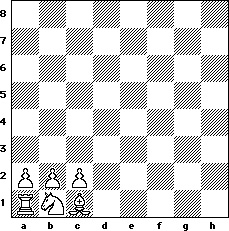
The Nb1 and the c-pawn, he explained, are married. Move Nc3 immediately and you have a bad marriage, because the c-pawn first belongs on c4. More than than that, it is sometimes also possible to play c3 and Na3-c2.
You may have figured out the rest. The Bishop and the b-pawn are married, not simply because the bishop defends it, but also because white has the opportunity to fianchetto the bishop with b3 and Bb2.
And yes, the rook is married to the a-pawn, not only because it defends it, but because if the first rank becomes congested, white can swing the Ra1 out with a4, Ra3-d3.
Finally, here's a short sample of great Bronstein games. Enjoy
December 7, 2003
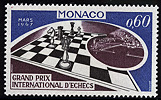 In 1967, Bobby Fischer demolished a strong field in Monte Carlo. The surprise of the tournament, however, was his late round loss to Yefim Geller, who took on Fischer in the American GM's own favorite defense, the Poisoned Pawn variation of the Najdorf Sicilian. Here's the game. Some even concluded at the time that Fischer lost the game on purpose to avoid showing off his own secrets.
In 1967, Bobby Fischer demolished a strong field in Monte Carlo. The surprise of the tournament, however, was his late round loss to Yefim Geller, who took on Fischer in the American GM's own favorite defense, the Poisoned Pawn variation of the Najdorf Sicilian. Here's the game. Some even concluded at the time that Fischer lost the game on purpose to avoid showing off his own secrets.
Fischer,R - Geller,E [B97]
Monte Carlo (11), 04.04.1967
1.e4 c5 2.Nf3 d6 3.d4 cxd4 4.Nxd4 Nf6 5.Nc3 a6 6.Bg5 e6 7.f4 Qb6 8.Qd2 Qxb2 9.Rb1 Qa3 10.f5 Nc6 11.fxe6 fxe6 12.Nxc6 bxc6 13.e5 Nd5 14.Nxd5 cxd5 15.Be2 dxe5 16.0-0 Bc5+ 17.Kh1 Rf8 18.c4 Rxf1+ 19.Rxf1 Bb7 Diagram
20.Bg4 dxc4 21.Bxe6 Qd3 22.Qe1 Be4 23.Bg4 Rb8 24.Bd1 Kd7 25.Rf7+ Ke6 0-1
As he started the post-mortem analysis with Geller, Fischer pointed to the diagram position and stated "It is a crushing position!" Indeed, it is. Black's king is exposed. Despite the material deficit, white does indeed have a crushing attack. Several months later in a match between the Soviet Union and Yugoslavia, IM Bogdavovich chose this critical variation against none other than Mikhail Tal. The result was a classic game although, as the following notes show, Tal missed the most convincing win.
Tal,M - Bogdanovic,R [B97]
JUG-URS Budva (6), 1967
1.e4 c5 2.Nf3 d6 3.d4 cxd4 4.Nxd4 Nf6 5.Nc3 a6 6.Bg5 e6 7.f4 Qb6 8.Qd2 Qxb2 9.Rb1 Qa3 10.f5 Nc6 11.fxe6 fxe6 12.Nxc6 bxc6 13.e5 Nd5 14.Nxd5 cxd5 15.Be2 dxe5 16.0-0 Bc5+ 17.Kh1 Rf8 18.c4 Rxf1+ 19.Rxf1 Bb7 20.Qc2 [20.Bd1!! N: Lilienthal. The threat is Rf3 and Ba4+ 20...Bb4 a)20...e4 21.Qc3+-; b)20...Be7 21.Bxe7 Qxe7 (b)21...Kxe7 22.Qg5+) 22.Ba4+ Kd8 23.Qa5+ Kc8 24.c5+/-; c)20...Rc8 21.Qe2 Be7 22.Qxe5 Rxc4 23.Qxg7+-; 21.Qb2+- (21.Qd3+-; 21.Qf2+-; 21.Qe3+-; 21.Qc2+-) ] 20...e4 21.Bg4 Be7 22.Qf2 0-0-0 23.Bf4 Bd6 24.Bxe6+ Kb8 25.Qb6 Bxf4 26.Qxd8+ Ka7 27.Rb1 Qd6 28.Bxd5 Bxd5 29.Qxd6 Bxd6 30.cxd5 1-0
That was 1967 and the verdict on the Poisoned Pawn variation has not yet been written. If you have the nerve to play it, here are the key games to study!
December 6, 2003
"Ich mache Fehler - also ich existiere!" (I make errors, therefore I am!) – Dr. Sawielly Tartakower.
Born in Russia, Sawielly Tartakower (1887-1956) left in 1899 to study in Switzerland and Austria. With a law degree, he became an Austrian citizen and fought with distinction in the infantry in World War 1.
After the war, he became a chess professional. He is well known for his prolific writings on chess, notably including My Best Games of Chess 1905-1954, 500 Master Games of Chess (with J. du Mont), and The Hypermodern Game. Modern writers estimate his strength in the 2600 range and, indeed, he had many impressive firsts, including Paris 1929, 1940, and 1947, Liege 1930 (several; points ahead of Nimzovitch, Rubinstein, Marshall, and Colle), Hastings 1945-6, and Venice 1947.
Though not one of its practictioners, Tartakower coined the expression "hypermodern" to describe the new approach used by Breyer and Reti. By contrast, his approach was eclectic, empracing many forgotton lines and, through throrough study, catching his opponents with new ideas.
Here are the games from his "My Best Games of Chess, 1905-1954."
And here is one of his minatures from the book.
(9) Perlis,J - Tartakower,S [B22]
Ostende-B Ostende (3), 1907
1.e4 c5 2.c3 d5 3.exd5 Qxd5 4.d4 cxd4 5.cxd4 Nc6 6.Nf3 Bg4 7.Be2 e6 8.Nc3 Qa5 9.0-0 Nf6 10.Ne5? Bxe2 11.Nxc6?? Diagram
[11.Nxe2 Nxe5 12.dxe5 Qxe5] 11...Qxc3 [11...Qxc3 12.bxc3 Bxd1 13.Rxd1 bxc6-+] 0-1
"Sacrifices only prove that someone has blundered" – Dr. Tartakower.
December 5, 2003
What's coming soon? Over the course of the next months, I expect to add many more games to the archive, bringing the collection at least through the mid-1980s. Time permitting, I expect to add games all the way through to the present day.
In the Chess on Stamp exhibit, I am working on an amazing article with Prof. Djukanovic on the Yugoslavia chess stamp on 1950. His writings (and exhibits) on that subject are among the finest contributions to chess philately, and I am proud to be able to assist those efforts with copious illustrations.
Thanks to "Djuka," as he likes to be known, I have also acquired an amazing collection of 63 photographs taken at the Dubrovnik Chess Olympiad in 1950, the event for which the stamps were issued. The pictures were all taken by a professional photogapher and include wonderful shots of a very young Larry Evans, Arthur Bisguier, S. Gligorich, and even a picture of an aged Tartakower. I intend to include many of those photos (as well as all of the games from the Olympiad) in the exhibit, but I am also content to sell some of the photos. That probably means Ebay, but anyone with interest should get in touch.
The Games of the 9th Chess Olympiad in Dubrovnik
I conclude today with a 50% scan of one of the photos, a remarkable (never before published) image of former World Champion Max Euwe at the 1950 Olympiad during his first round game against American Sam Reshevsky.

December 4, 2003
Why do masters resign? It's quite a puzzle to beginners. Surely it's best to play until checkmate.
Masters, of course, have pride. There's a certain etiquette. When there's no hope left, resignation is in order.
Still it can be a puzzle to determine just why they give up. Every once in awhile, it's a mistake. Here's a special game from my past. I played this in the mid to late 1980s... a very aggressive game by me. A quick resignation on move 22 with a somewhat cryptic comment: "This is just too complicated" wrote my opponent.
Complicated indeed. And quite a shock. I thought that I might be winning, but there was surely a lot of play left. I include my analysis at the time, but I remain unconvinced. There are at least two lines that appear to be unclear. Is there a moral in all of this? Sure! Play aggressively! Your opponent may crumble under the complexities of the complications!
1.d4 Nf6 2.c4 c5 3.d5 b5 4.cxb5 a6 5.f3 e6 6.e4 axb5 7.dxe6 fxe6 8.Bxb5 Ba6 9.Qe2 Bxb5 10.Qxb5 Nc6 11.Be3 Nb4 12.Qe2 c4 13.Nh3 Nd3+ 14.Kf1 Qb8 15.Bd4 e5 16.Bc3 d5 17.exd5 Nxd5 18.Nf2 Bc5 19.Nxd3 Ne3+ 20.Ke1 cxd3 21.Qxd3 0-0 22.Nd2 e4 Diagram
[22...e4 23.fxe4 a)23.Nxe4 Nxg2+ 24.Kf1 (a)24.Kd1 Rd8 25.Nxc5 Rxd3+ 26.Nxd3 Qb5; a)24.Kd2 Rd8 25.Nxc5 Qf4+ 26.Kc2 Rxd3 27.Nxd3 Qxf3-+) 24...Ne3+ 25.Ke2 Qf4 26.Nxc5 Qxf3+ 27.Kd2 Qf2+ 28.Kc1 (a)28.Qe2 Rad8+ 29.Nd3 Rxd3+ 30.Kxd3 Rd8+ 31.Bd4 Rxd4+ 32.Kxd4 Qxe2-+) ; b)23.Qxe4 Re8 24.Qc6 Nxg2+ 25.Kd1 Ne3+ 26.Kc1 Bb4 27.Rg1 Bxc3 28.Qxc3 (b)28.bxc3 Qxh2-+) 28...Rc8-+; 23...Qf4 24.Qe2 (24.Rc1 Qf2#) 24...Nc2+ 25.Kd1 Nxa1 26.Qc4+ Kh8 27.Qxc5 Qg4+ 28.Kc1~~ (28.Nf3 Rxf3 29.gxf3 Qxf3+-+) ] 0-1
December 3, 2003
I'm well known today as an advocate of the Hedgehog, but such was not always the case. Here's one of my correspondence games from the late 1980s. This encounter was memorable for an interesting reason. Around the time that the game ended, a Spanish province offered a prize for the best game played in this variation, the Catalan. So I sent in the game, hoping that the nice combination at the end of the game might attract the attention of the judges. Unfortunately, I never received a response, but the game remains a pleasant one. Enjoy!
1.d4 Nf6 2.c4 e6 3.g3 d5 4.Bg2 Be7 5.Nf3 0-0 6.0-0 Nbd7 7.Qc2 c6 8.Nbd2 b6 9.b3 Bb7 10.Bb2 Rc8 11.Rac1 Qc7 12.cxd5 exd5 13.Nh4!? Rfe8 14.Nf5 Bf8 15.e4 dxe4 16.Nxe4 Nxe4 17.Bxe4 Nf6 18.Bf3?! c5 19.Bxb7 Qxb7 20.dxc5 Rxc5 21.Qb1 Ne4 22.Rxc5 Diagram
22...Nd2! [ 22...Bxc5-/+] 23.Rc7!? [ 23.Qd3 Nf3+ 24.Qxf3 Qxf3 25.Nd4 Qg4 26.Rcc1 Bc5-/+] 23...Nf3+! 24.Kh1 [ 24.Kg2 Ne1+ 25.Kh3 Qg2+ 26.Kg4 ( 26.Kh4 Nf3+ 27.Kg4 ( 27.Kh5 Qh3+ 28.Nh4 g6+-+) 27...h5+ 28.Kxh5 ( 28.Kf4 g5#) 28...Qh3+ 29.Nh4 g6+-+) ] 24...Qxc7 25.Nd4 [ 25.Qd3 Qb7-+] 25...Nd2 0-1
December 2, 2003
At the National Chess Congress, Ildar Ibragimov (2578) and Igor Novikov (2706) draw quickly in Rd 6 to tie for first place at 5-1.
Here are two of the most exciting games from the just concluded Bali Stars. Check out especially the nice combination from the champion, Bulgarian grandmaster Veselin Topolov, over the world's youngest GM, Sergey Karjakin of the Ukraine.
1.e4 c5 2.Nf3 d6 3.d4 cxd4 4.Nxd4 Nf6 5.Nc3 a6 6.Be3 e5 7.Nf3 Qc7 8.Bg5 Nbd7 9.a4 h6 10.Bh4 g5 11.Bg3 Nc5 12.Nd2 Be6 13.Be2 0-0-0 14.0-0 h5 15.h4 Bh6 16.Ra3 g4 17.Bd3 Kb8 18.Re1 Bf4 19.Nf1 d5 20.exd5 Nxd5 21.Nxd5 Bxd5 22.Ne3 Bc6 23.b4 Nxd3 24.cxd3 Qd6 25.Qb1 Rhe8 26.Kh2 Bxe3 27.fxe3 f5 28.Rf1 Rf8 29.Qc1 Qxb4 30.Bxe5+ Ka8 31.Bg3 Qe7 32.Rc3 Qe6 33.a5 Qd5 34.Rf2 Rf6 [ 34...Qxa5 35.Rxc6 bxc6 36.Qxc6+ Ka7 37.Rb2 Rb8 38.Qd7+ Ka8 39.Bc7+-] 35.Qa3 Re8 36.Rc5 Qd7 [ 36...Qd8] 37.e4 Ref8 38.Rcxf5 Rxf5 Diagram
39.Qxf8+! Rxf8 [ 39...Qe8 40.Rxf5+-] 40.Rxf8+ Qe8 [ 40...Ka7 41.Bb8+ Ka8 42.Bc7+ Qe8 43.Rxe8+ Bxe8 44.Bb6+-] 41.Rxe8+ Bxe8 42.Bc7 b5 43.axb6 Kb7 44.Kg3 a5 45.Kf4 a4 46.Bd6 Kxb6 47.g3 Kc6 48.Ba3 Bf7 49.Kg5 Kd7 50.Kf6 Bb3 51.d4 Bc2 52.Ke5 Kc6 53.d5+ Kd7 54.Kd4 1-0
Anand,V (2766) - Graf,A (2646) [D35]
Hotel Bali Stars Benidorm ESP (7), 28.11.2003
1.d4 Nf6 2.c4 e6 3.Nf3 d5 4.Nc3 Nbd7 5.cxd5 exd5 6.Bf4 c6 7.h3 Nb6 8.Qc2 g6 9.e3 Bf5 10.Qb3 Bg7 11.Be2 0-0 12.0-0 Re8 13.Ne5 a5 14.Rfc1 a4 15.Qd1 Nfd7 16.Nd3 Nc4 17.Nxa4 b5 18.Nc3 Bxd3 19.Qxd3 Nxb2 20.Qb1 Nc4 21.a4 bxa4 22.Rxa4 Rxa4 23.Nxa4 g5 24.Bh2 Nxe3 25.fxe3 Rxe3 26.Bf3 Bxd4 27.Kh1 Qa5 28.Nb2 Qb4 29.Bg1 Rb3 30.Qf5 Bxb2 31.Rxc6 Ne5 Diagram
32.Qxg5+ Ng6 33.Bxd5 Rd3 [ 33...Ra3 34.Rb6+-] 34.Rxg6+ hxg6 35.Qxg6+ Kh8 36.Qxd3 1-0
December 1, 2003
Ildar Ibragimov has the lead at the National Chess Congress. Here are the games from rounds 4 and 5.
I have finally (after just 12 years) put up some introductory material in the openings section on Queen Pawn openings. Thank you all for your extreme patience. More coming soon.
One of my young students has been playing 1.e4 c6 2.Nc3 d5 3.Qf3 in the Caro-Kann. There are a few obvious traps. More important, it's a lesser known approach that has still some impressive followers. Here's a collection of games to view.
Finally, for those who pine for tougher tactics to tackle, I'm having fun with the challenges of a new book, The Magic of Chess Tactics.

Here's an example from the book. It's white to move and win. And it's more challenging than the chess puzzles you usually face.
1.Nxd7 Qxd7 2.Qe5 f6 3.Qxf6! Bxf6 [3...Bf8 4.Rxg6+ hxg6 5.Qxg6+ Kh8 6.Nf6+-; 3...Bd8 4.Rxg6+ hxg6 5.Qxg6+ Kh8 6.Bg7+ Kg8 7.Be5+ Kf8 8.Bd6+ Re7 (8...Qxd6 9.Qg7#) 9.Qg7+ Ke8 10.Nf6#] 4.Nxf6++- *
For past entries, please check out the Chess Blog archive.
Please feel free to sign the new Chess is Fun Guestbook. Or share your chess thoughts at the brand new Chess is Fun Message Board!
 since November 6, 2003
since November 6, 2003
How to support this web site? There are expenses for storage and the domain name. If you enjoy this site and want it to grow, please consider making your chess purchases by starting at this site. We get a small commission from Amazon and the other vendors with each purchase, so long as you go to Amazon or those vendors from here... even if it's not one of our listed products! Thanks for your support!
Or, if you prefer, you can make a small, voluntary donation via Paypal:
Copyright, Jon Edwards 2003
All rights reserved

 One of the great classics of human analysis is Jan Timman's The Art of Chess Analysis. The Dutch GM was one of the world's strongest players during the 1970s and this collection of 24 games dates from that period. There are three games from the 1972 Fischer-Spassky match, four Timman games, and a slew from players such as Karpov, Spassky, Hort, Kortchnoi, and Portisch. More important than the great players and great games is Timman's readable analysis.
One of the great classics of human analysis is Jan Timman's The Art of Chess Analysis. The Dutch GM was one of the world's strongest players during the 1970s and this collection of 24 games dates from that period. There are three games from the 1972 Fischer-Spassky match, four Timman games, and a slew from players such as Karpov, Spassky, Hort, Kortchnoi, and Portisch. More important than the great players and great games is Timman's readable analysis.
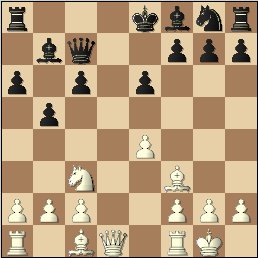
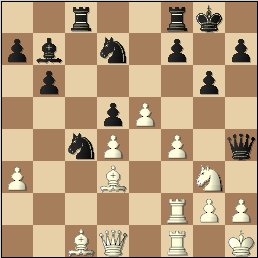
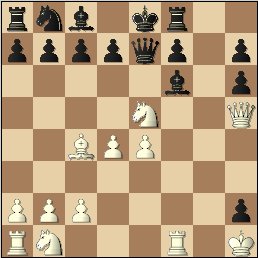
 On December 16, I mentioned two of Graham Burgess's books. His 1998
On December 16, I mentioned two of Graham Burgess's books. His 1998 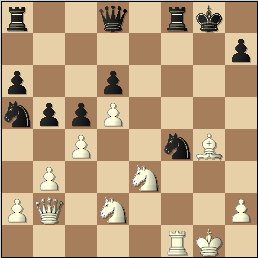
 The 1999 World Chess Championship in Las Vegas had a new knock-out format and a surprise winner, Russian Grandmaster Alexander Khalifman. Khlaifman had been competing successfully in the highest levels of chess for years so his win should not have come as a complete shock. He has a broad opening repertoire and a distinctive style, a willingness to sacrifice a pawn or more for long term positional compensation.
The 1999 World Chess Championship in Las Vegas had a new knock-out format and a surprise winner, Russian Grandmaster Alexander Khalifman. Khlaifman had been competing successfully in the highest levels of chess for years so his win should not have come as a complete shock. He has a broad opening repertoire and a distinctive style, a willingness to sacrifice a pawn or more for long term positional compensation.
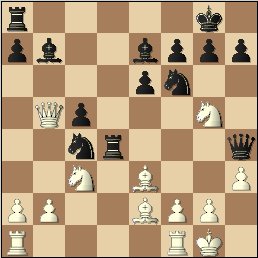

 May this holiday
May this holiday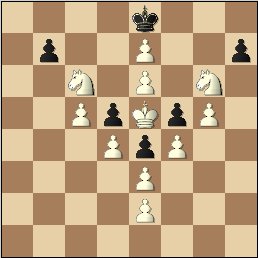
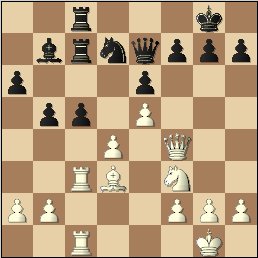
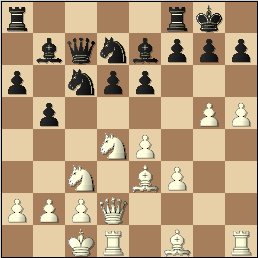
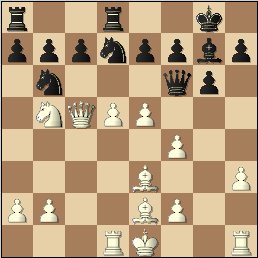
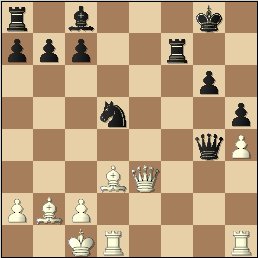
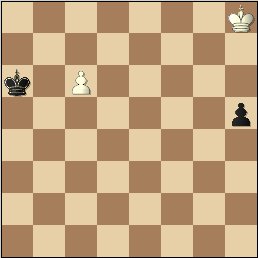
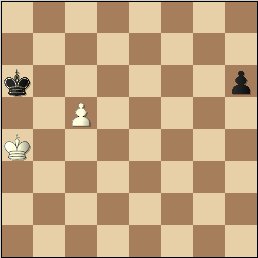
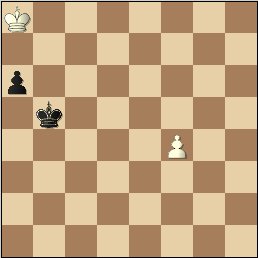
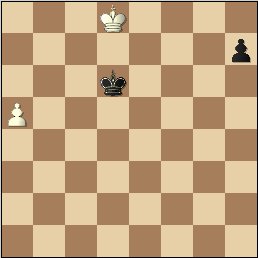
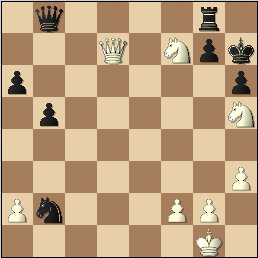
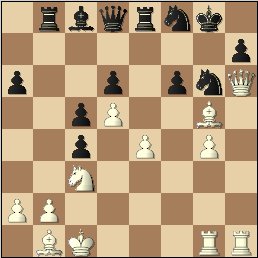

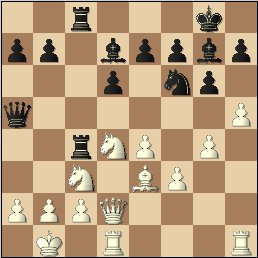
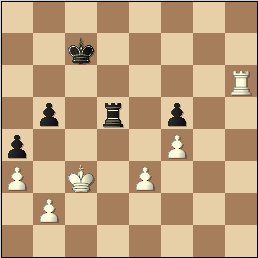
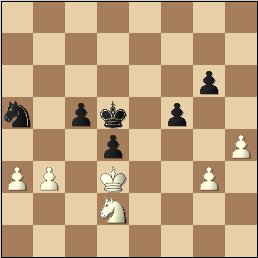
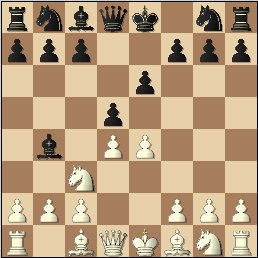
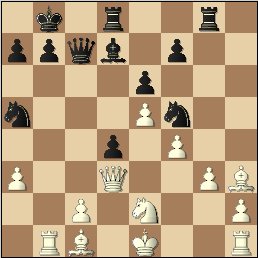
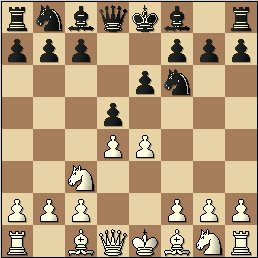
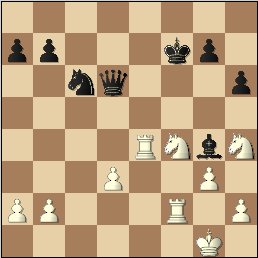

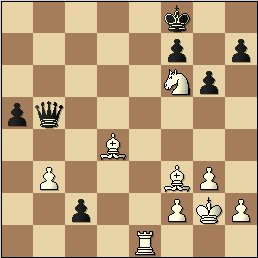
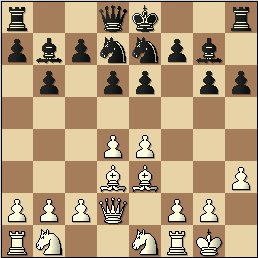
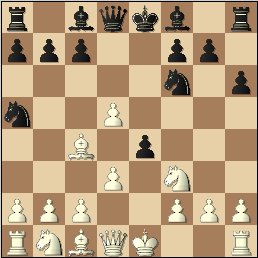

 In 1967, Bobby Fischer demolished a strong field in
In 1967, Bobby Fischer demolished a strong field in 